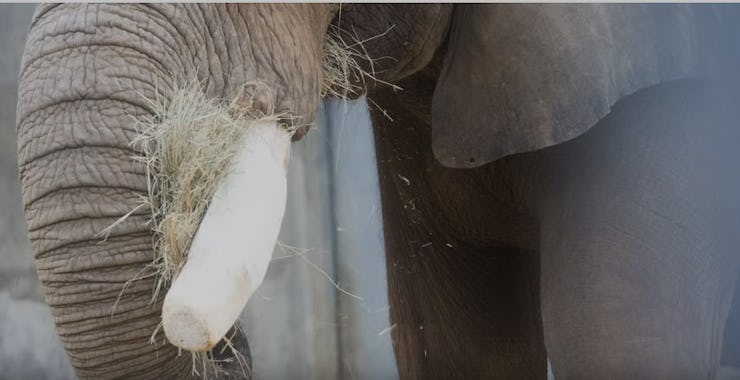Elephant Gets Industry-Grade Carbon Fiber Fix for Busted Tusk
When pachyderms go to the dentist, they get the space-age treatment.

Tusks are an elephant’s multi-tool, a Swiss-army incisor for fighting off other elephants, scrounging in the dirt, and carving the bark off trees. So when a 35-year-old elephant named Bulwagi busted his tusk at the Birmingham Zoo, his handlers knew they’d have to fix it. In the past, when elephants have cracked their tusks, steel bands encircle the fissure to keep the tooth together, which is what the zoo asked Brian Pillay, a University of Alabama at Birmingham engineer to do.
But Pillay thought he could do Bulwagi one better: a carbon fiber bandage, made of the same stuff found in the aerospace industry. Stronger and lighter than steel — about a fifth of the weight of a metal ring — the carbon fiber will keep the tusk intact and also prevent infection at the site of injury.
In a UAB press release, the zoo veterinarian, Dr. Richard Sim, describes the process:
“We put a number of layers of carbon fiber and fiberglass around the tusk, and then used a vacuum pump to suck the resin, kind of like an epoxy, up into that product, and it set and became a really hard structure that is going to resist the forces that resulted in the crack. No one has done this before, so it’s our hope that this will be a process that will stand the test of time.”
The zoo isn’t sure if this is a permanent fix, as Bulwagi might end up losing the tusk. But if the proof-of-concept procedure works, carbon fiber wraps could help pachyderm cracks down the line.
New medical materials overwhelmingly focus on human healthcare — that’s where the money is — but as design and techniques become cheaper, expect animals to benefit, too — like disabled dogs who run thanks to 3D-printed legs; or dolphins with prosthetic fins.